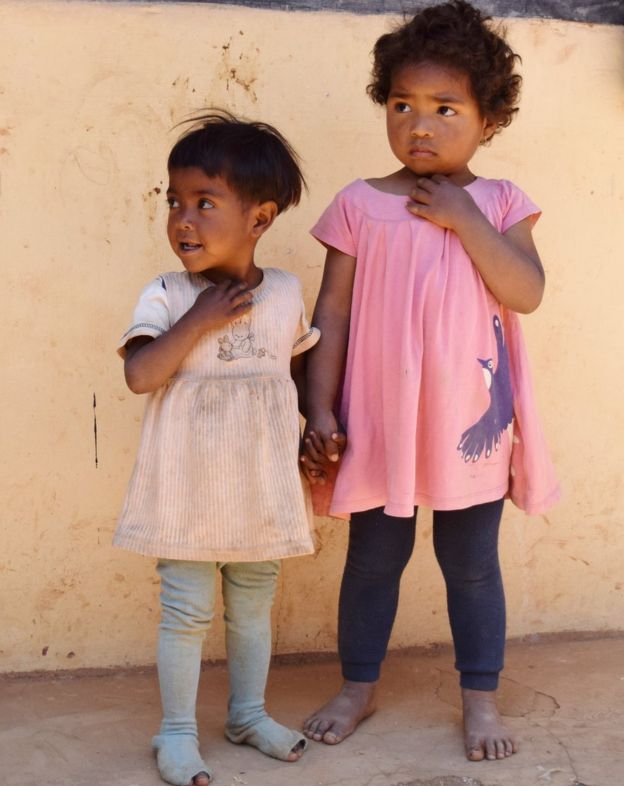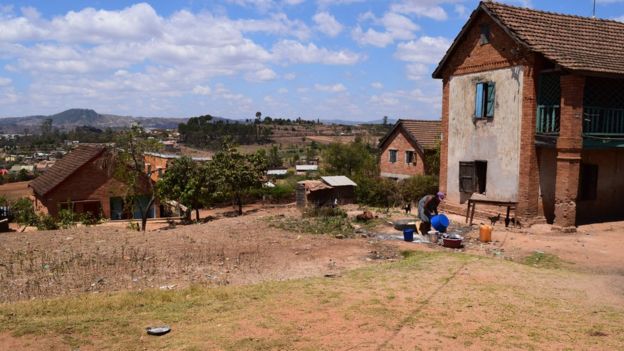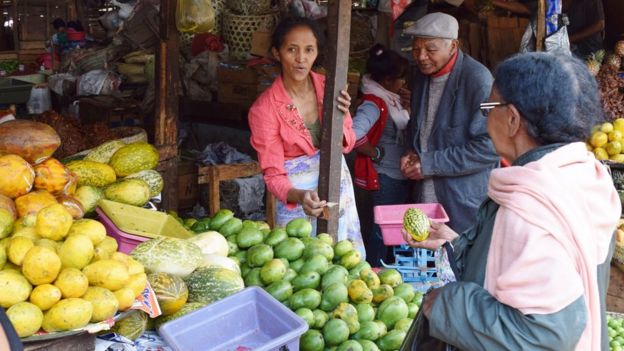
People in Madagascar are puzzled why
some children aren't getting enough nutrients - so are shorter than
their peers - in an area where there is plenty of food.
In a community nutrition centre in a suburb of Antsirabe - one of the main towns in the central highlands region of Madagascar - two little girls, just under three-and-a-half years old, have come for a check-up.
When Jiana and Rova stand near each other the difference between the two is shocking.
Rova is a full head shorter than Jiana. She weighs just 60% of Jiana's weight and looks so much more fragile.

Like many developing countries, Madagascar has a problem with this form of malnutrition.
Almost half of children under five are affected. The central highlands region, however, presents a particular paradox when it comes to chronic malnutrition.
The area has fertile soils and produces masses of food. Poverty and sanitation indicators are not the worst in the country and the healthcare infrastructure is relatively good.

How this can be is a question that experts like Simeon Nanama, head of nutrition at the UN children's agency Unicef in Madagascar, are urgently trying to answer.
"We are here facing a dilemma that we all want to understand," Mr Nanama said. "In some of these regions 60% of the kids are affected."

A child suffers acute malnutrition when there is a severe lack of food. Children with acute malnutrition are very thin and sometimes have swollen abdomens and limbs.
The outward signs of chronic malnutrition are not as easy to spot and this type of malnutrition is mainly caused by a lack of essential nutrients.
Children with chronic malnutrition are of course smaller and thinner than other children the same age, but otherwise they can look quite healthy.
The tragic thing about chronic malnutrition is that it has long-term effects on children's brain development.
Miora Randriamamonjy, Jiana's mother, knows children who have suffered from chronic malnutrition at a young age will not do as well at school and will not be as productive as adults, even if their living conditions improve later in life.
Her eyes well up with tears when she talks about how powerless she feels about the situation. She says she only has just enough resources to look after her own children.
"It's so sad and I can't do anything about it. They are just kids," she said.

But at the moment he says they need to continue investigating. He's hoping a report due soon will shed some light on the issue.
In the meantime, there are all sorts of theories about what could be the main factors behind the high rates of chronic malnutrition in the central highlands.
They range from the type of meals families prepare, and lack of childcare, to the fact that so much food produced in the region is transported to the capital, Antananarivo, for sale there.
One theory that I heard from a few different people during my visit to the area was that too many people farm land owned by others, rather than having the resources to work their own plots.
Vololona Ranaivoson is the community nutrition agent for the village of Ambalapaiso about 20km (12 miles) outside Antsirabe.
"People don't have the money to buy the things they need to farm themselves and the things they need to live at the same time," she said.
On top of this, she said there the problem of access to farmland.
If this is the reason some children are shorter than others, then eradicating stumped growth will not be simple.
No comments:
Post a Comment